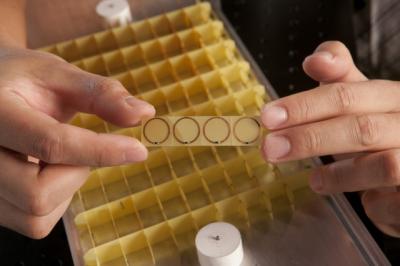Duke University’s electrical engineers have discovered a material that helps them in manipulating light resembling the way that electronics manipulates electron flow.
 A metamaterial device
A metamaterial device
This discovery can replace the electrical components produced with those that use optical technologies. Devices based on light would allow more efficient and rapid transfer of data in the similar way as the replacement of wires with optical fibers brought about a radical change in the telecommunications industry. This achievement was possible with the help of a unique man-made structure called a metamaterial. These unusual composite man-made materials are not a single substance, but a whole structure which on fabricating exhibit properties not observed in nature.
Despite getting weakened, refracted, or reflected, the light rays passing through a material will be the same light that comes out of the material. This property of light is referred to as linearity. Alec Rose, graduate student at Duke's Pratt School of Engineering stated that however, with light of higher intensity, specific nonlinear materials disobey this rule by transforming the entered energy into a new light beam with a frequency double than the original and this is known as the second-harmonic.
To demonstrate this, Rose made the crystal come in contact with few laser pointers, which converts the original laser light beam into another different color beam referred as the second-harmonic. Even though these materials exhibit nonlinear properties, large amount of effort and time is required in designing such type of devices that can control the second harmonic light direction.
The device measuring 8” by 6” and with a height of about 1” was developed using single pieces of fiberglass material same as those utilized in circuit boards. Each piece of fiberglass was made to etch with copper circles. There was a miniature gap in every single copper circle that was spanned with the help of a diode. When light is passed through this gap, it breaks the original symmetry of light resulting in non-linearity.
Source: http://www.duke.edu/